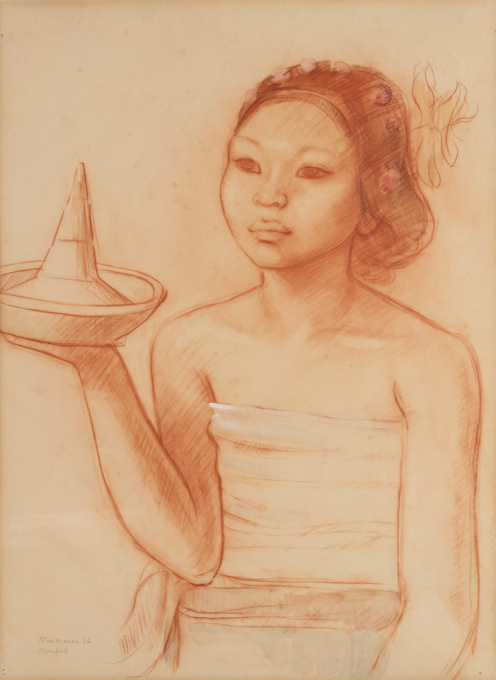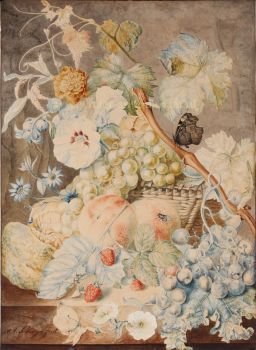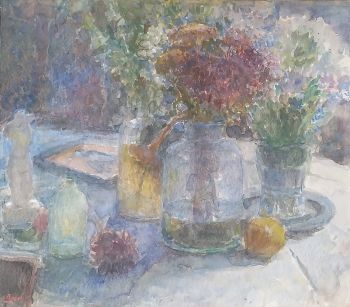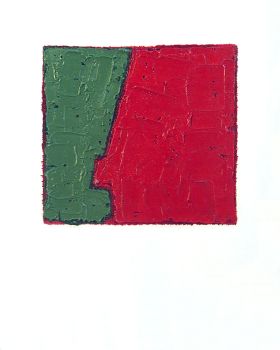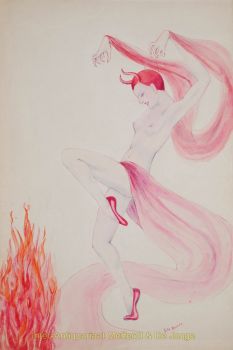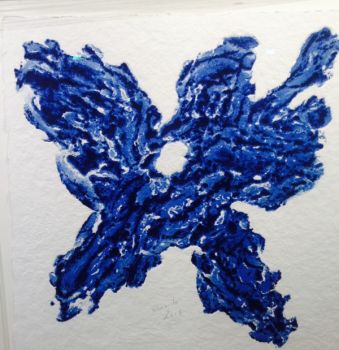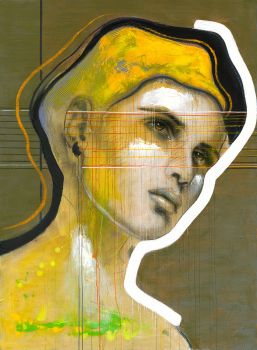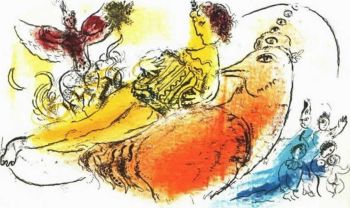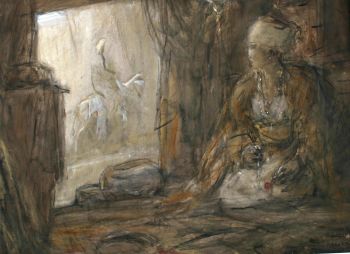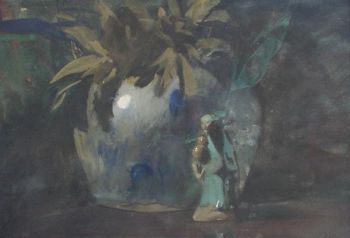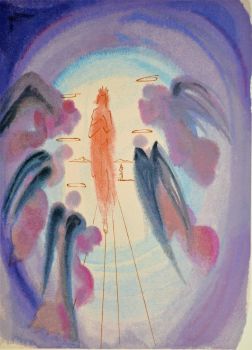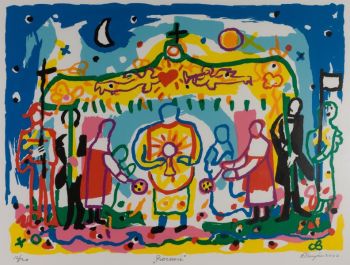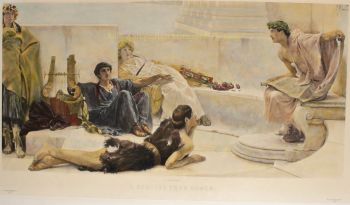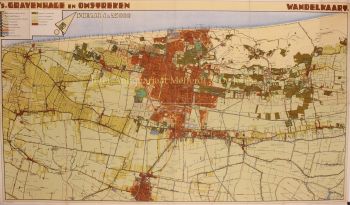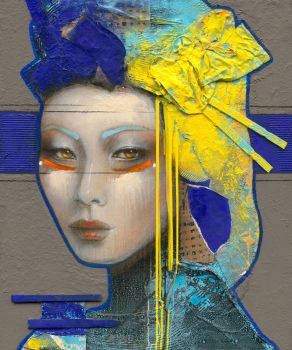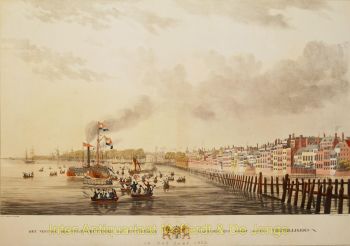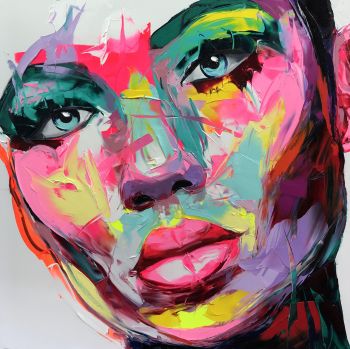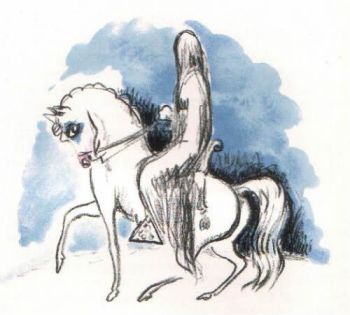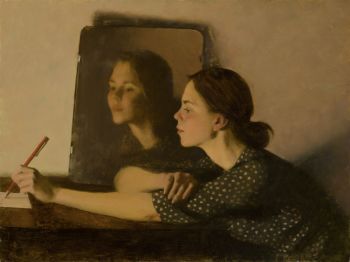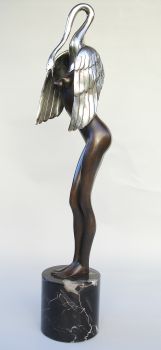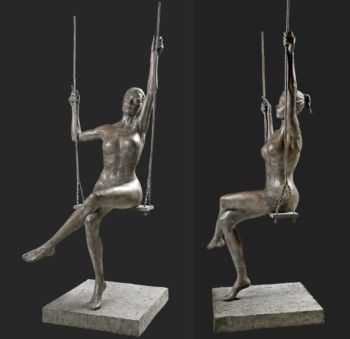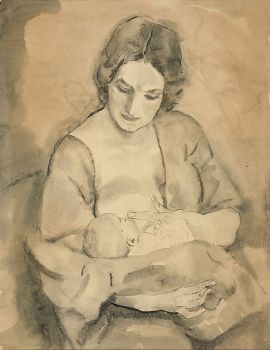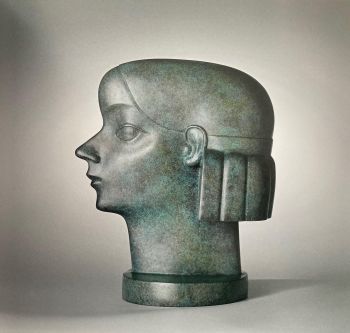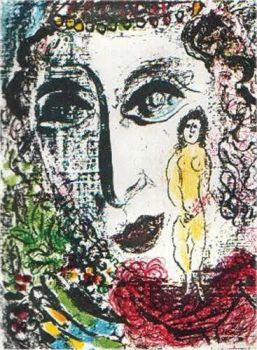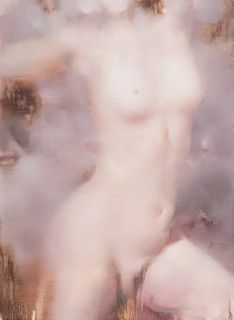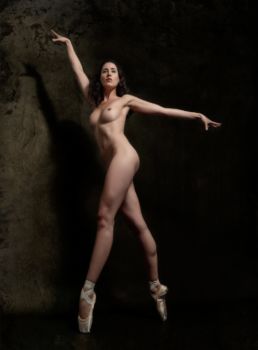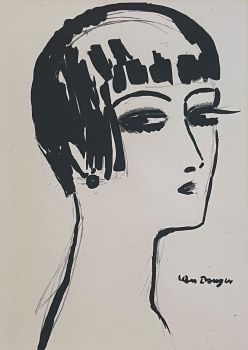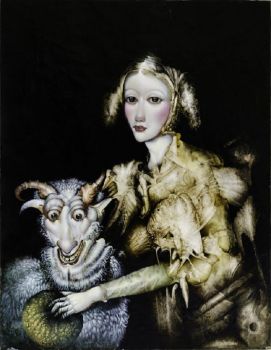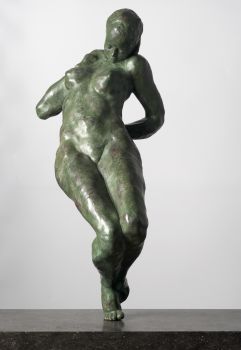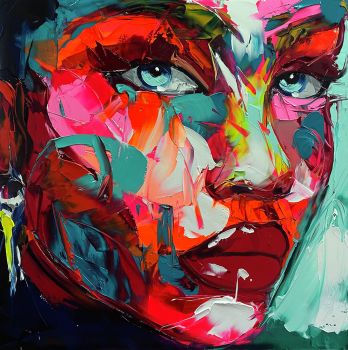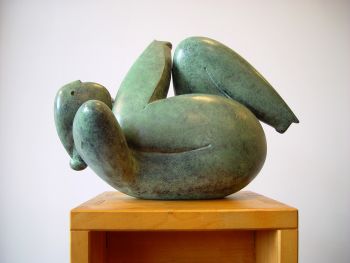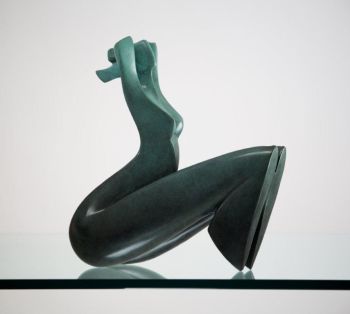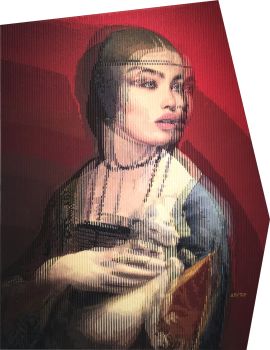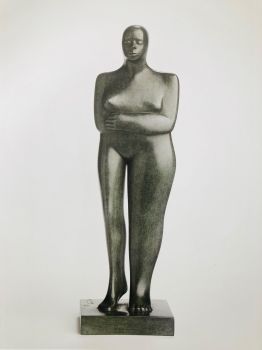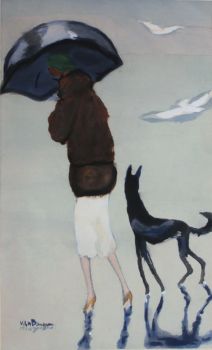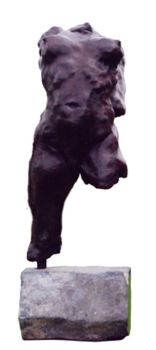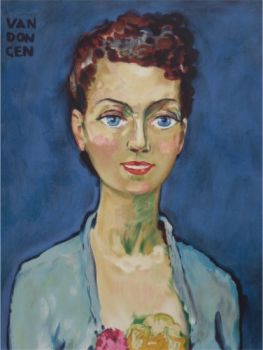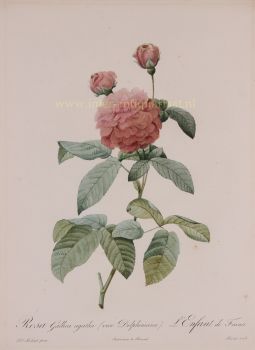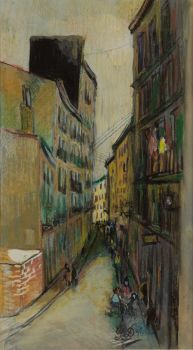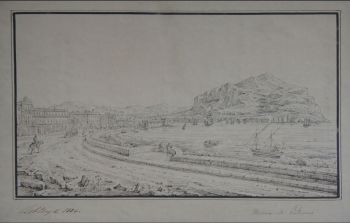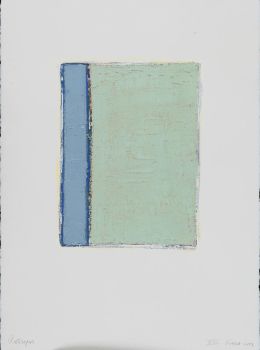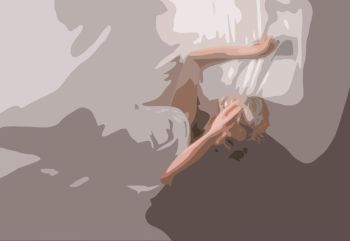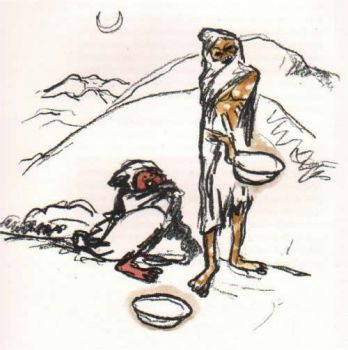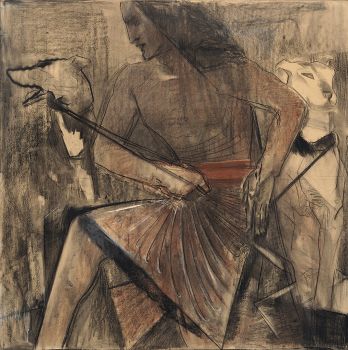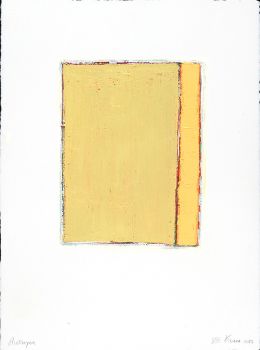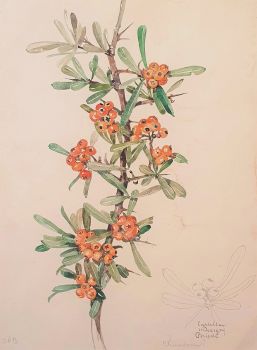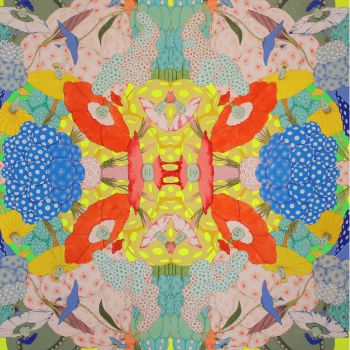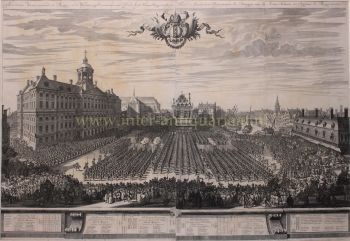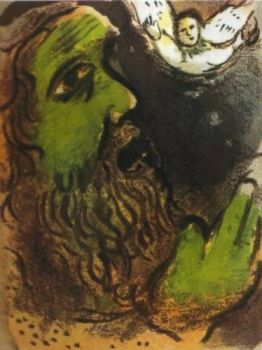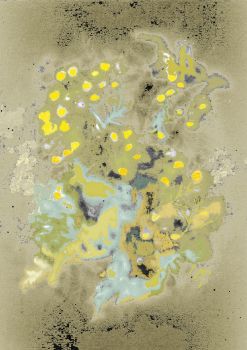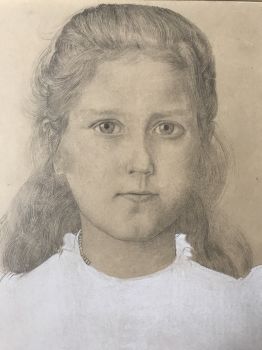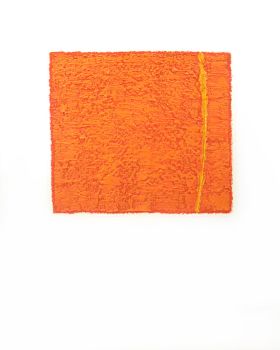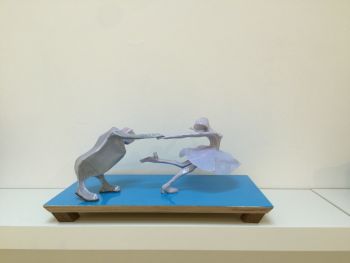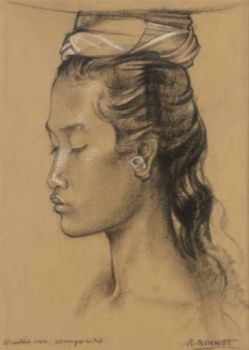«Une femme balinaise avec des offrandes» 1936
Theo Meier
Papier
57 ⨯ 41 cm
Prix sur demande
Zebregs & Röell - Fine Art - Antiques
- Sur l'oeuvre d'artTHEO MEIER (1908-1982)
“A Balinese woman with offerings”
Signed, dated '36 and annotated Mankok (the name of the sitter) lower left
Sanguine on paper, 57 x 41.5 cm
In a hand-made and hand-painted frame with address: Max Knöll, Herberggasse 4/1, Basel.
Provenance:
Private collection, Basel (acquired directly from the artist)
Private collection, London
Note:
Theo Meier was born in Basel, where he attended art school and became a successful portrait painter. However, after visiting an exhibition in Basel of Tahitian paintings by Paul Gaugin, he decided to follow in Gaugin’s footsteps and go to the South Pacific. To finance his voyage, he founded a club in which every member pledged a monthly sum in return of which they could choose one of Meier’s paintings upon his return.
In 1932, at the age of 24, he embarked on his voyage to the South Sea. In Tahiti, he certainly discovered the beauty of the colours of the tropical world but the primitive simplicity of the inhabitants, he had seen in Gaugin’s paintings turned out to be more in the artist’s fantasy than in reality. He returned to Basel but in 1935 again was on his way to the South Sea. In 1936 he arrived in Bali, planning to stay there for two or three weeks, but thirty years later he was still there. In Bali “a delirium laid hold of me which even today has not subsided”, he was to write much later. The present drawing was made during his first “delirius” year in Bali. In Bali, he settled and found inspiration and friendship with other artists including Walter Spies, who guided Theo to a deeper understanding of Balinese culture and invited him to his small mountain retreat in the village of Iseh (for a beautiful painting of Iseh by Meier see Uit Verre Streken, March 2018, nr. 60). In 1938 he married a young girl from the village, Ni Madé Mulugan, and in June 1939 his first daughter was born. In 1941 he divorced Ni Madé and a year later remarried his favourite model, Madé Pegi.
During the Japanese occupation of Indonesia and the subsequent war of independence, Theo lived in Iseh with Madé Pegi who bore him his second daughter in 1948. In 1950, for the first time in 15 years, Theo went back to Basel to sell paintings and get some money to support his family in Bali. When he returned in 1952, he found Madé Pegi in love with a Balinese dancer, and they divorced. In December 1955, two years before Sukarno decreed that all foreign residents had to leave the country, Theo went back to Switzerland where he had several financially successful exhibitions. In 1957, on the invitation of his friend Prince Sanidh Rangsit, Theo moved to Thailand. In 1966 he returned to Bali for the first time in many years and purchased land in Iseh to build a house.
- Sur l'artisteTheo Meier était un artiste suisse de Bâle qui était particulièrement actif à Bali et en Thaïlande. Il a étudié à l'Académie des Beaux-Arts de Bâle et a commencé sa carrière artistique après avoir reçu une allocation de l'Académie. Après un portrait commandé avec succès, Meier a pu se rendre à Berlin où il a rencontré des artistes tels qu'Emil Nolde, Max Lieberman et Otto Dix, qui lui ont beaucoup appris sur les techniques de peinture. Inspiré par Gauguin, Meier a voyagé à Tahiti à l'âge de 24 ans. Il est revenu désillusionné mais après n'avoir pas trouvé le mode de vie primitif qu'il avait espéré voir de ses propres yeux. Un an plus tard, Meier est allé à Bali. Il a été immédiatement frappé par la belle île et sa culture. Il s'installe à Sanur, rencontre d'autres artistes sur l'île et se marie assez rapidement en 1936 avec une femme balinaise. Pendant l'invasion japonaise de la Seconde Guerre mondiale, Meier a été autorisé à rester à Bali car la Suisse était un État neutre, mais beaucoup de ses œuvres ont été confisquées et perdues. Dans les années 1950, Meier est retourné en Suisse pour une courte période. En 1957, il se rend en Thaïlande, où il s'installe à Chiang Mai pour le reste de sa vie, peignant le paysage et les habitants locaux. Theo Meier travaillait dans un style coloré, ressemblant à Gauguin et aux fauves. Son travail peut être vu dans de multiples collections et musées à travers le monde.
Êtes-vous intéressé par l'achat de cette oeuvre?
Artwork details
Related artworks
Jan Voerman sr
Still Life with flowers in a Chinese figurine1850 - 1900
Prix sur demandeKunsthandel Pygmalion
1 - 4 / 24- 1 - 4 / 24
- 1 - 4 / 24
Artiste Inconnu
UN MODÈLE JAPONAIS D'UN NORIMONO, UN PALANQUIN1650 - 1700
Prix sur demandeZebregs & Röell - Fine Art - Antiques
Artiste Inconnu
UN RARE GRAND TÉLESCOPE EN CUIR LAQUÉ JAPONAIS1750 - 1800
Prix sur demandeZebregs & Röell - Fine Art - Antiques
Engelbert Kaempfer
LIVRE ENGELBERT KAEMPFER1651 - 1716
Prix sur demandeZebregs & Röell - Fine Art - Antiques
Artiste Inconnu
UNE COLLECTION DE QUATRE BOÎTES À BIBLE EN IVOIRE SRI LANKAN18th century
Prix sur demandeZebregs & Röell - Fine Art - Antiques
Artiste Inconnu
Deux portraits d'étude du Mas Marco Kartodikromo1900 - 1950
Prix sur demandeZebregs & Röell - Fine Art - Antiques
1 - 4 / 12

